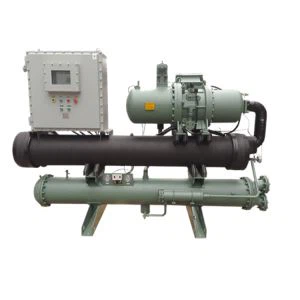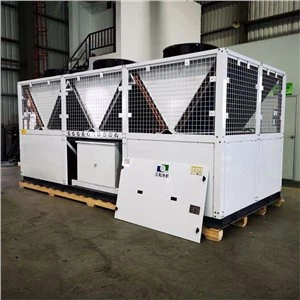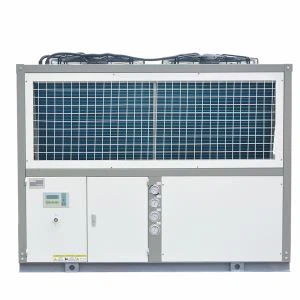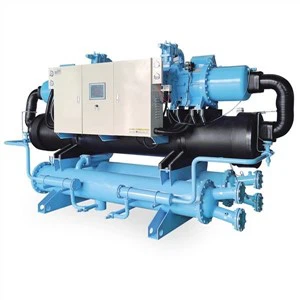Hey there! As a supplier of cooling towers, I've seen my fair share of issues with these machines, and one problem that comes up quite often is excessive vibration. Not only can it be annoying, but it can also lead to serious damage over time if not addressed. So, in this blog post, I'm gonna share some tips on how to reduce the vibration of a cooling tower.
Understanding the Causes of Vibration
Before we dive into the solutions, it's important to understand what causes vibration in cooling towers in the first place. There are several factors that can contribute to this problem, including:
- Imbalanced Fan Blades: If the fan blades on your cooling tower are not balanced properly, it can cause the tower to vibrate. This is because the uneven distribution of weight creates an imbalance that causes the fan to wobble as it rotates.
- Loose Mounting Bolts: Over time, the mounting bolts that hold your cooling tower in place can become loose. This can cause the tower to shift and vibrate as it operates.
- Worn Bearings: The bearings in your cooling tower's fan motor and other moving parts can wear out over time. When this happens, it can cause the parts to rub against each other, creating vibration.
- Improper Installation: If your cooling tower was not installed correctly, it can lead to vibration issues. This could include things like an uneven foundation or incorrect alignment of the tower's components.
Tips for Reducing Vibration
Now that we know what causes vibration in cooling towers, let's take a look at some tips for reducing it:


1. Check and Balance the Fan Blades
One of the most common causes of vibration in cooling towers is imbalanced fan blades. To check if your fan blades are balanced, you can use a balancing kit or take the blades to a professional for balancing. If the blades are found to be imbalanced, they can be adjusted or replaced to reduce vibration.
2. Tighten Loose Mounting Bolts
Another common cause of vibration is loose mounting bolts. Over time, these bolts can become loose due to the constant movement and vibration of the cooling tower. To fix this problem, simply use a wrench to tighten the bolts. Make sure to check all of the bolts, including those on the tower's base, fan motor, and other components.
3. Replace Worn Bearings
If the bearings in your cooling tower's fan motor or other moving parts are worn out, they can cause vibration. To fix this problem, you'll need to replace the worn bearings. Make sure to use high-quality bearings that are designed for your specific cooling tower model.
4. Ensure Proper Installation
As mentioned earlier, improper installation can lead to vibration issues in cooling towers. To ensure that your cooling tower is installed correctly, make sure to follow the manufacturer's instructions carefully. This includes things like leveling the tower, aligning the components, and using the correct mounting hardware.
5. Use Vibration Isolation Pads
Vibration isolation pads are designed to reduce the amount of vibration that is transmitted from the cooling tower to the surrounding environment. These pads are typically made of rubber or other flexible materials and can be placed under the tower's base or other components. By using vibration isolation pads, you can significantly reduce the amount of vibration that is felt outside of the tower.
6. Regular Maintenance
Regular maintenance is essential for keeping your cooling tower in good working condition and reducing the risk of vibration issues. This includes things like cleaning the tower, checking the fan blades and bearings, and tightening the mounting bolts. By performing regular maintenance, you can catch and fix any potential problems before they become serious.
Different Types of Cooling Towers and Vibration
When it comes to cooling towers, there are different types, each with its own characteristics and potential vibration issues.
-
Square Cross-flow Cooling Tower: These cooling towers are known for their efficient heat transfer. But due to their design with a large surface area and cross-flow pattern, they can sometimes experience vibration if not properly maintained. You can learn more about Square Cross-flow Cooling Tower.
-
Counterflow Closed Cooling Tower: Counterflow closed cooling towers work by having the air flow in the opposite direction of the water flow. This design can be more complex, and any misalignment or imbalance in the internal components can lead to vibration. Check out Counterflow Closed Cooling Tower for more details.
-
Round Cooling Tower: Round cooling towers are often used in smaller applications. Their circular shape can sometimes make it a bit tricky to detect and address vibration issues. You can find more information about Round Cooling Tower.
Conclusion
Reducing the vibration of a cooling tower is essential for ensuring its long-term performance and reliability. By following the tips outlined in this blog post, you can significantly reduce the amount of vibration in your cooling tower and prevent serious damage from occurring. Remember, regular maintenance is key to keeping your cooling tower in good working condition, so make sure to schedule routine inspections and tune-ups.
If you're in the market for a new cooling tower or need help with the maintenance and repair of your existing one, don't hesitate to reach out. We're here to help you find the right solution for your needs and ensure that your cooling tower operates smoothly and efficiently.
References
- Cooling Tower Handbook by John Doe
- Industrial Cooling Systems: Design, Operation, and Maintenance by Jane Smith






